In the ever-evolving world of fashion, trends come and go. However, there are some that manage to resurface time and time again, leaving an indelible mark on popular culture. One such trend is the wallet chain. With its multiple comebacks and occasional descent into obscurity, this accessory has captivated generations since its emergence in the 1950s. What started as a practical item designed to secure wallets has now transformed into an independent means of personal expression.
The History of Wallet Chains
Originally, wallet chains were the product of the biker subculture, which developed in the post-war era. To young people who just returned from the battlefields, motorcycles become the representation of freedom to live by their own rules as opposed to the restrictions imposed by society. But this freedom came with significant risks, and motorcyclists were in a continuous search of protective gear. But it wasn’t enough for this gear to be just practical. It was supposed to be tough and rugged, too.
At first, chains were viewed as pragmatic tools for motorcyclists to keep their wallets intact while testing the limits of their motorcycles. Speaking of that, you can check some of these wallets here https://www.bikerringshop.com/collections/biker-wallets. Let’s continue. Apart from this function, chains served as a deterrent to thieves and pickpockets targeting riders for their cash or valuables. Typically made of metal links or leather straps, chains attached a wallet to either belt loops or a belt.
Soon it became clear that a wallet chain can go beyond a mere utilitarian tool. Motorcyclists started embellishing them with motifs and symbols that represented the biker’s identity or affiliation. These are skulls, crosses, wings, flames, dragons, logos, etc. A unique wallet chain for biker quickly became a symbol of the new culture as well as its statement of toughness and fearlessness. These striking accessories became a visual representation that the wearer was not afraid to stand up for themselves and the values of the biker lifestyle.
Wallet Chins and Popular Culture
In the 1970s, wallet chains began to spread beyond the biker movement, making their way into the realm of popular culture. This accessory, with its unique blend of functionality and style, caught the attention of various subcultures and music genres.
Punk Subculture of the 1970s
One of the first music genres to embrace wallet chains was the punk movement. However, in the hands of punk pioneers, these safety pieces took on a new role. They underwent a transformation from mere utilitarian items to edgy fashion accessories to reflect the nonconformist values of punk rock. Wallet chains, worn in distinctive and innovative ways, became a means of self-expression. Adorned with spikes, studs, or safety pins, they emerged as a powerful symbol of the punk ethos—defiance, individuality, and an anti-establishment attitude.
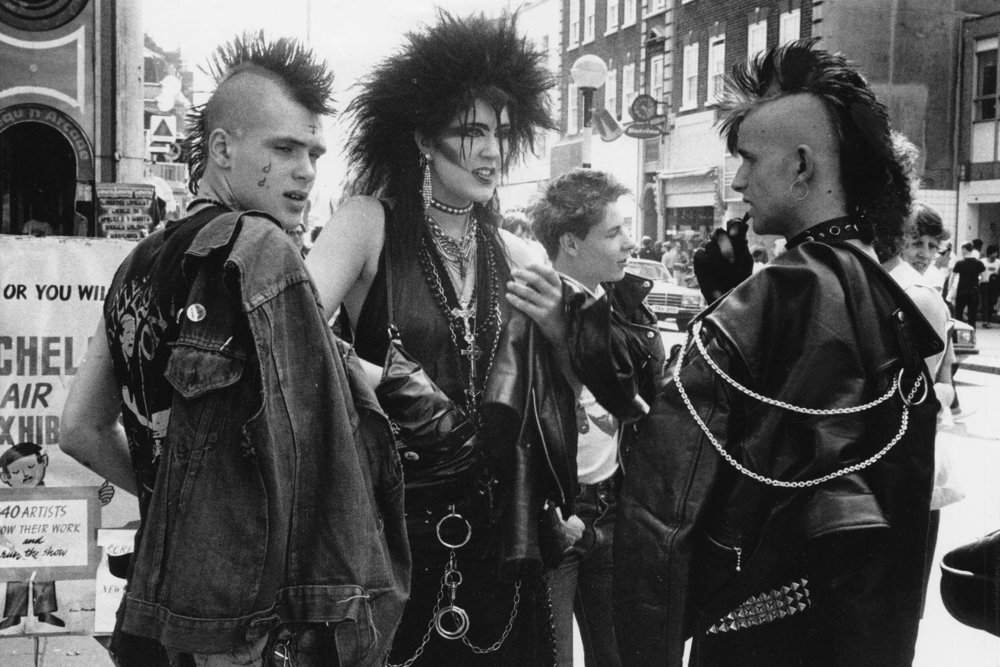
Prominent wallet chain wearer: Sid Vicious
Sid Vicious, the bassist for the legendary Sex Pistols, embodied the essence of rebellion. Known for his edgy fashion choices, Sid frequently sported a chain as part of his punk aesthetic. Whether he was performing on stage or roaming the streets, his bold and defiant style helped to cement the wallet chain as a symbol of rebellion and counterculture.
Metal Subcultures of the 1980s
The 1980s witnessed the emergence of various subcultures, each leaving its own mark on fashion and style. Quickly becoming popular with goths, rivet heads, and other alternative scenes, metal chains were supposed to add an element of intrigue and mystery to their looks. Goths, in particular, integrated wallet chains into their dark and dramatic attire. Rivet heads, on the other hand, blended the accessory with their industrial-inspired outfits.
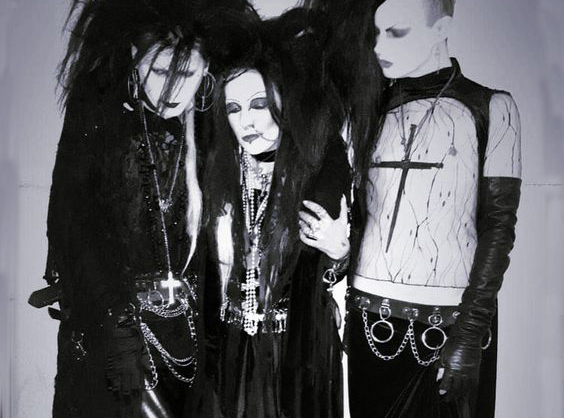
Prominent wallet chain wearer: Siouxsie Sioux
Siouxsie Sioux, the frontwoman of Siouxsie and the Banshees, played a significant role in the goth scene. She loved adding wallet chains to her stage outfits, infusing her iconic looks with a touch of punk edge. Siouxsie was one of those artists who contributed to the establishment of an inseparable bond between a wallet chain and alternative subcultures.
Mainstream Rock of the 1980s
The 1980s weren’t solely about subcultures and alternative music acts. They also saw the rise of mainstream rock genres. Bands such as Motley Crue, Poison, and Guns N’ Roses willingly incorporated wallet chains into their flashy and flamboyant stage outfits. Paired with tight leather pants, bandanas, and metal-inspired accessories, these chains brought a touch of rockstar allure and epitomized the excess and decadence of the era.
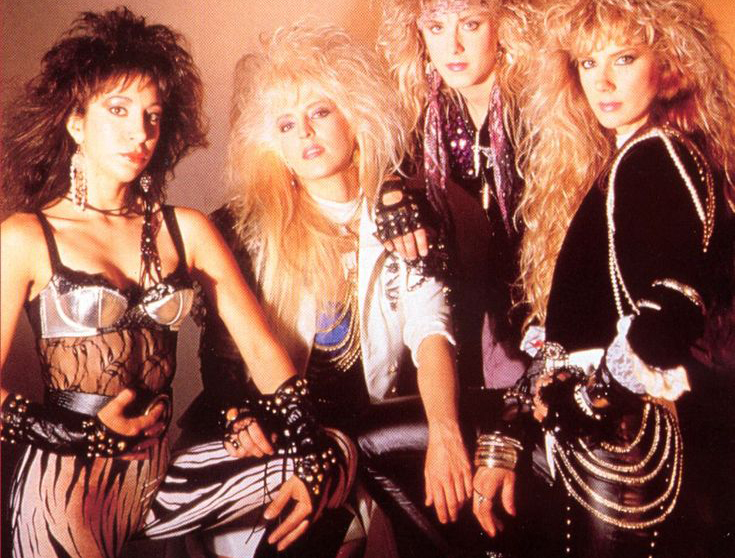
Prominent wallet chain wearer: Axl Rose
Axl Rose, the charismatic frontman of Guns N’ Roses, was no stranger to making a fashion statement. Often seen wearing a wallet chain, Axl sought to maximize the edge of his rocker persona. From electrifying performances to memorable music videos, a chain became an iconic part of his image, conveying his rock ‘n’ roll spirit and resonating with fans worldwide.
Grunge Culture of the 1990s
As the 1990s arrived, the grunge movement took the music scene by storm. Known for their laid-back and anti-fashion attitude, grunge musicians and fans adopted a more relaxed approach to style. Wallet chains, combined with flannel shirts, oversized sweaters, cardigans, beanies, ripped jeans, Converse sneakers, and a mix of thrift-store finds, brought a showstopper element to the grunge aesthetic. They became a subtle nod to the genre’s rebellious roots while reflecting the disenchanted and apathetic spirit of the era.
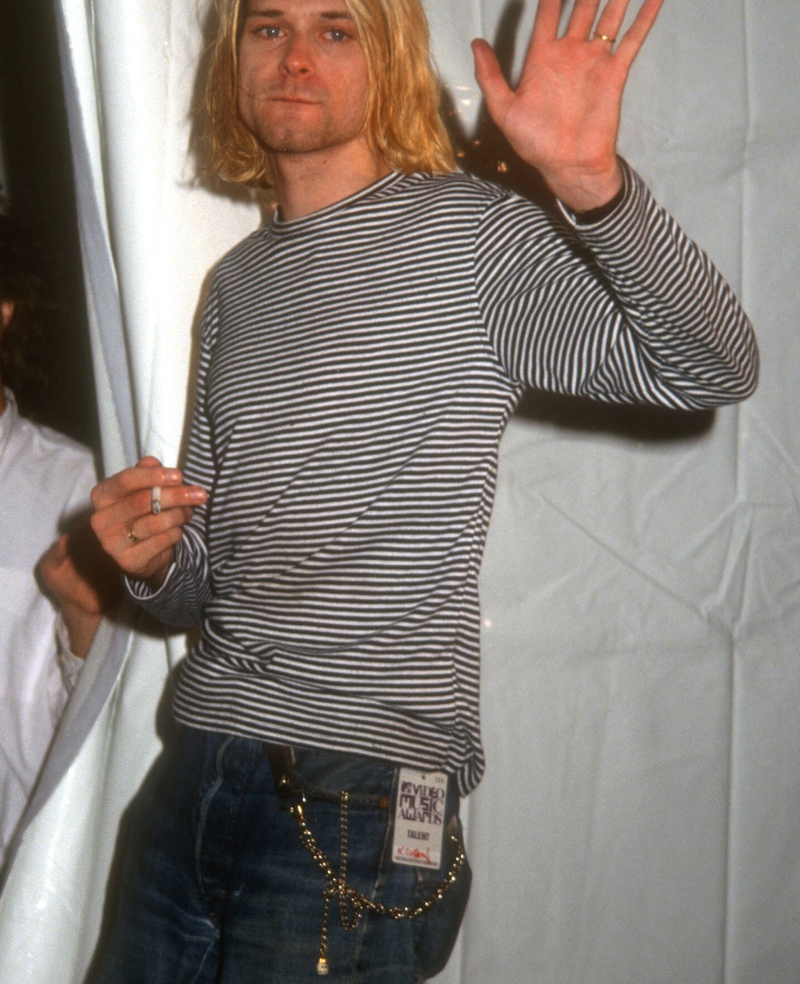
Prominent chain wearer: Eddie Vedder
Eddie Vedder, the lead vocalist of Pearl Jam, was known for his laid-back and rugged style. Often seen wearing flannel shirts, distressed jeans, and work boots, Vedder occasionally complemented his ensembles with a wallet chain. This addition aimed to connect the seemingly disconnected elements of his look, showcasing a blend of grunge nonchalance and dissent.
Hip Hop of the 1990s
The rise of hip hop culture brought forth a fresh wave of fashion influences, among which wallet chains found their place. Hip hop artists deemed these chains as a symbol of status. Hence, the bigger and flashier they were, the better. Crafted from gold or silver, they became the means to accentuate the opulence and success associated with the hip hop lifestyle.

Prominent chain wearer: Wu-Tang Clan
This influential NYC-based rap group was renowned for its gritty style and lyrical prowess. Members like Method Man, Ghostface Killah, and Raekwon often donned wallet chains as part of their street-inspired ensembles. The chains complemented their baggy jeans, oversized jackets, and signature Wu-Tang logo apparel. They served as a valuable contribution to their rugged and defiant image.
Rave of the 1990s
Within the vibrant and energetic rave scene, wallet chains took on a playful and colorful twist. Ravers embraced these chains as a component of their eclectic outfits, pairing them with neon-colored clothing, accessories, and elaborate jewelry. In this context, wallet chains became a means of self-expression and camaraderie, amplifying the vivacious and free-spirited nature of the rave culture.
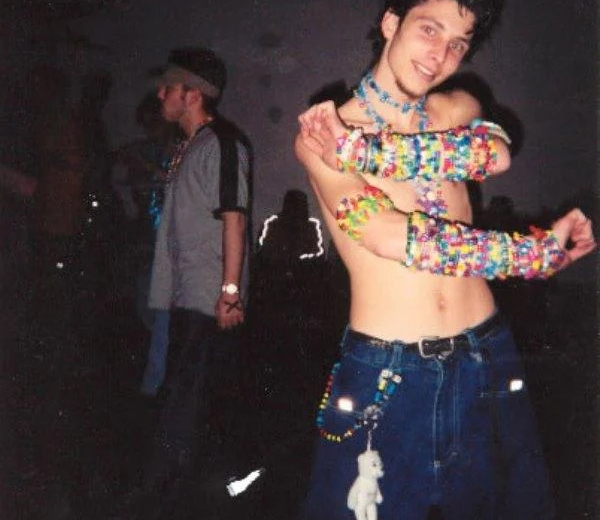
Prominent chain wearer: The Prodigy
As pioneers of the electronic music scene, The Prodigy amalgamated elements of rave, techno, and punk, resulting in an electrifying sound and an equally bold visual aesthetic. The group’s charismatic frontman, Keith Flint, was known for his daring fashion choices, which occasionally included wallet chains. His edgy and audacious style, coupled with high-energy performances, left a lasting impact on the rave scene.
Nu Metal of the 2000s
Nu metal, a genre that emerged in the late 1990s, blended alternative metal, hip hop, and industrial music. This resulted in a distinctive sound that reflected the angst and aggression of the era. In line with the genre’s defiant spirit, wallet chains became a prominent accessory for nu metal artists and served as an extension of their fierce style. Blurring the boundaries between streetwear and metal fashion, the artists and their followers boldly combined baggy cargo pants, oversized hoodies, and band t-shirts with metal and leather accessories.
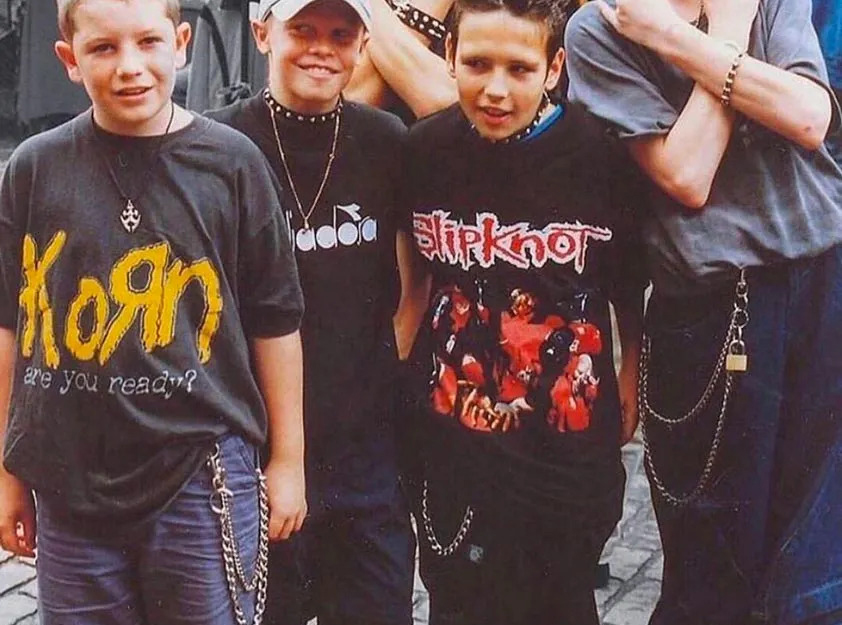
Prominent wearer: Limp Bizkit
Known for their energetic performances and rap-infused sound, Limp Bizkit played a significant role in shaping the nu metal scene of the late 1990s and early 2000s. Fred Durst, the band’s frontman, often adorned himself with wallet chains as part of his signature style. These chains became a complementary element to the band’s urban and street-inspired aesthetic.
Resurrection in the 2010s
While nu metal enthusiasts keep life in a fading trend, mainstream fashionistas of the 2000s viewed them as something outdated or clichéd. In their eyes, these accessories were too bulky, noisy, and impractical for modern lifestyles. As a result, they replaced them with items and gadgets serving similar functions, such as cell phones, key rings, or lanyards.
But the downfall of wallet chains didn’t last too long. They experienced a resurgence in popularity during the 2010s, coinciding with the revival of ’90s fashion and culture. Celebrities and influencers sought to channel their nostalgia or pay homage to their musical idols by donning wallet chains. These chains also found their place within new music genres and subcultures that flirted with the biker or punk aesthetics, such as pop punk, emo rap, and k-pop.
To keep up with the times, wallet chains had to undergo updates and reinventions, featuring new materials, designs, and functionalities. It was now uncommon to see plastic detachable options in neon colors. As for their looks, they mixed and matched various styles including streetwear, goth, and glam.
Prominent wallet chain wearers of this era:
– Lil Wayne
– Kanye West
– Ne-Yo
– Miley Cyrus
– Machine Gun Kelley
– Liam Payne
The Present of Wallet Chains
In the present day, wallet chains can still be spotted on some stars and influencers who pay homage to ’80s and ’90s fashion. Billie Eilish, Post Malone, Travis Scott, and Lil Uzi Vert have all been seen introducing wallet chains into their outfits.
Additionally, these accessories gained substantial popularity in Japan and other eastern markets. One reason for this is the rise of mobile payment systems, such as PayPay, Line Pay, and D-Barai, in Japan. These systems allow users to make payments using their smartphones through QR codes or barcodes. Wallet chains serve a dual purpose in this context: they prevent the loss or dropping of a device by attaching it to the belt or pants, and help elevate otherwise simple casual outfits.
Another factor contributing to their popularity is Japanese brands and designers who have a fondness for Americana, rockabilly, and heritage aesthetics. Brands like Neighborhood, Visvim, Mastermind Japan, and Sophnet have been taking advantage of wallet chains since the late ’90s. In their creative hands, they showcase less traditional materials, colors, patterns, and motifs.
All of this leads us to the question: should you wear a wallet chain? Ultimately, the decision rests on your personal style preferences. While some may view it as a nostalgic nod to the past, others embrace it as a form of self-expression and an extension of their individuality. A carefully chosen wallet chain can add attitude and character to any ensemble, whether it’s a casual streetwear look or a more refined and eclectic outfit. Striking a balance between following the trend and ensuring it complements your overall style aesthetic is key.
